The when, where, how, and who of bugging out is one of the perennial fireside chats of the prepared world. This is for very good reasons. When it’s time to bug out every minute counts. Every step must put you in a safer position. If not, you are moving towards peril.
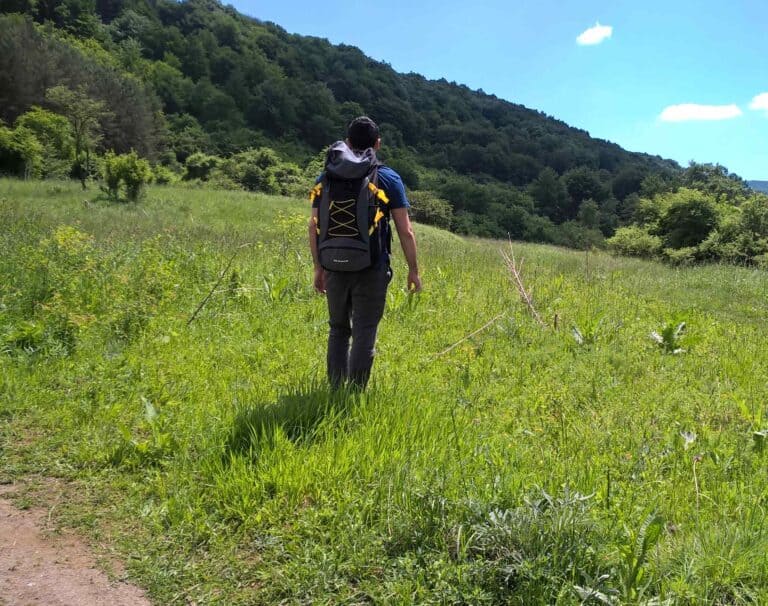
The best opportunity for success in life is to have a plan. Bug outs are no different.
In order to have a complete bug out plan there are several factors to take into consideration. These will include reasons and triggers, destination, conveyance, and equipment.
We have covered bits and pieces before. In this article we will cover the topic end-to-end. Along the way we will reference the other great articles written by the family here at Survival Sullivan. We will also provide a few checklists to keep your thoughts and plans in order.
Table of Contents
Types of Threats to Consider
It will benefit you to organize your threats. Bugging is out not a one size fits all situation. Be prepared with personal, local, regional, and national plans.
Personal Threats
Personal emergencies happen every day. When it comes to bugging out this is simply an event that denies you the use of your home. This can be an apartment fire, a tree through the roof, or simply a faulty heating system during the dead of winter.
Bugging out from a personal evacuation can take you to a hotel or even a neighbor’s living room. I know it’s not that sexy, but it is a reality that doesn’t need a complex solution.
Personal Threat Checklist:
- ✅ Job loss
- ✅ Injury, loss of spouse, child, other loved one
- ✅ Home, shelter loss
Local Threats
Local emergencies involve you and your neighbors or even a few towns around you. Again, no need to evacuate to the woods when a tornado takes out your town or an ice storm takes down the local electrical grid.
Bug outs from local emergencies are often to the next town or county over. In most cases it is best to stay close during personal and local bug outs. Even just to manage the recovery (e.g. interact with insurance companies).
Local Threat Checklist
- ✅ Severe weather
- ✅ Forest fire or threat of fire
- ✅ Local grid outage
- ✅ Local pandemic
Regional Threats
Regional events require much more deliberate movements in order to survive and thrive. Regional emergencies include nuclear emergencies, earthquakes, as well as hurricanes.
Social disruption will be widespread and it may not be possible to escape by simply crossing the railroad tracks. To escape these threats, you must move to another part of the country.
Regional Threat Checklist
- ✅ Nuclear emergency
- ✅ Grid down emergency
- ✅ Extreme weather, earthquake
National Threats
National events encompass the biggies. EMPs, Civil War 2, and even full nuclear exchanges. Everyone is affected and the only way to escape is to leave population centers.
The misery and the suffering will be complete. You must move to a remote area, or a location populated 100% by like-minded people.
National Thread Checklist
- ✅ EMP
- ✅ WW III
- ✅ CW2
- ✅ National cyber attack
Bug Out Triggers
Any well thought out bug out plan will start with a section on bug out triggers. A trigger is the event that initiates the plan.
My vision of triggers includes two components – the situation and the event. Situations are derived from your threat matrix. What are the events that you are preparing for? Weather, social, national situations each have their own makeup and build up.
Triggers are your call to action. For each event review the details at the local, regional, and national levels.
Recognize the disruptions that can arise and how they will affect your situation. This includes both your ability to survive and thrive in your current location as well as your ability to escape if needed.
Once enough events have transpired that put your local survival at risk you must bug out. Summarize all the events that would tips the scales against survival and these are your triggers.
Your bugout initiates with a trigger! Once a trigger has been tripped you must begin taking the steps identified within your bug out plan.
There can be no exceptions to this! You have already identified that staying only puts you in more danger!
Each threat has an independent trigger that will send you out of danger’s way. Use this information to organize your plan and what events are the most probable on your threat matrix, so you know exactly when the right time to bug out is.
Weather
Weather is one on the most dependable bugout triggers. Every region of the world has its own foul weather. Here in the U.S. we have snow, ice, and tornadoes just to name a few. When the serious storms hit it’s time to get off the “X.”
Weather is one on the most dependable bugout triggers. Every region of the world has its own foul weather.
Here in the US we have snow, ice, and tornados just to name a few. When the serious storms hit it’s time to get off the “X.”
In the last fifteen years, there have been an average of over 300 climate and weather-related events, primarily storms and floods, annually around the world.
Although our technology has made some great advances in recent years, you can’t control or predict the weather.
Weather Trigger Checklist
- ✅ Severe Thunder Storms
- ✅ Tornado \ Microburst \ Straight Line Winds
- ✅ Ice Storm
- ✅ Fire
- ✅ Hurricane \ Flooding
Social Disorder
There are few things more concerning than a mob turned sour. In modern times we’ve seen the LA riots, the New York City Blackout, and the “Unrest” in Ferguson. Find yourself in the wrong place at the wrong time and you’re in serious trouble.
Most social disorder has a catalyst. It is rarely without reason or advanced notice. Be it an extreme storm or a socially charged incident. For the observant, there will always be a spark. This will be your trigger.
The best option for social disorder is vigilance. Know the political landscape and the various players in your region. Are any of them prone to violence or organized opposition to any political movement or action.
Keep abreast of the news and follow any highly charged political events. We have seen many times where actions on the national stage stir local performers to action.
Based on the events establish a reasonable trigger for evacuation. Ensure that trigger has you out of harm’s way before tempers flare.
Social \ Societal Checklist
- ✅ Political \ Social Justice Protests
- ✅ Riots
- ✅ EBT \ Benefits Outage
- ✅ Major Sporting Events
National Threats
In the preparedness world we think big! EMP, nuclear war, pandemics! Nothing better to get the survival juices flowing than a complete downturn of society.
While very exciting we need to add bit of reality to the threat matrix for these events. While they are at the extreme end of rare, they will affect millions of people.
Bugging out during a national time of crisis takes timing, planning, and dedication.
Everyone. I repeat everyone, will be looking to improve their situation via one of three paths.
Depending on the generosity of the Government, church, or others. Exploiting the naivete or weakness of others. Which camp will you be in?
Design your triggers so that you are away from danger before the masses descend on these crutches.
National Checklist
- ✅ Political Conventions
- ✅ Elections
- ✅ Political Riots
- ✅ War
Bug Out Intelligence
It is crucial for you to be alerted to any potential problems at the earliest point possible. When every second counts you must have the advantage. You will be achieving this through ongoing intelligence gathering and assessment.
Personal intelligence is gathered and assessed by you and those closest to you. Take an honest assessment of your health, finances, and job security. Ask your closest friends to do the same.
Can you really survive your bug out in the shape you are currently in? Will your job employ you through a minor crisis or is that relationship tenuous? Do you risk losing your job with one missed day?
Local and regional intelligence can be gained by conducting an assessment on your area.
Are there locations of higher risk to travel through? Are there signs to look for as warning indicators? These include gang tags, overt drug sales, etc.
Weather is a big factor at the local and regional level. Monitor the weather. You will want to have at least one and maybe several different NOAA emergency radios.
These will alert you to any possible danger or hazard once it becomes known to the National Weather Service. Most times this will be before it’s announced on television.
Another thing you can do is to begin to observe the weather patterns in your local area, both at home and at work.
Notice how bright or dark it is as you go to and from work. Pay attention to the sounds of the birds, other animals, and traffic.
Watch the leaves and try to predict whether or not it will rain. If you are aware of what regular weather patterns look like on a daily basis, you will be quicker to notice when something seems out of the ordinary or significant.
At the national level the news and internet are your go to sources. Bear in mind that these include not only the main stream media but also alternate sources. Often the secondary and tertiary sources scoop the national news by hours or even days.
Just have your BS filter in place as rumor can often be confused as facts in some outlets.
Intelligence Asset Checklist
- ✅ Local, regional, national news
- ✅ Alternate media
- ✅ Police scanners
- ✅NOAA weather radio
- ✅ HAM radio operators and nets
Your Bug Out Location (BOL)
Once you have your trigger to evacuate, you need to know where to go. Generically speaking this will be your BOL. Merely leaving in hope of finding safer ground is dangerous business. For each event in your plan you must have a destination.
Grand or meager, your BOL is your safe haven from troubled times. In fact, you should have multiple BOLs as bugging out is not a one size fits all situation. No need to go the cabin in the deepest darkest woods when the emergency is a failed furnace.
Location, Location, Location
For each level of threat have a BOL. I’m a big fan of redundancy. For each threat level (personal, local, regional, and national) have several options where possible.
Your personal, local, and regional plans should all have multiple options. At the very least you should have one BOL in each cardinal direction (north, south, east, and west). This can include friends, hotels, and even campgrounds.
It will most likely not be practical to have several BOL options for national events (I know for me it’s impossible.
Good for you if you have options!). A single well selected and outfitted BOL should be able to suffice for most national events.
Location Checklist
- ✅ Multiple Local BOLs
- ✅ Multiple Regional BOLs
- ✅ The ultimate BOL
BOL Travel
Regardless of whether your BOL is an underground bunker 100 miles away from the nearest soul, or it’s a Motel 6 five minutes away you will need to get there. For each location you are best served to have multiple routes.
While on the move, documentation is your best friend! Hit Google Maps. Get local gas station maps. Make copies, and mark them up.
Map out and practice using several different routes to get to your destination. Keep in mind that major highways and intersections could be bottlenecked by government roadblocks or crowds of desperate people trying to leave the area.
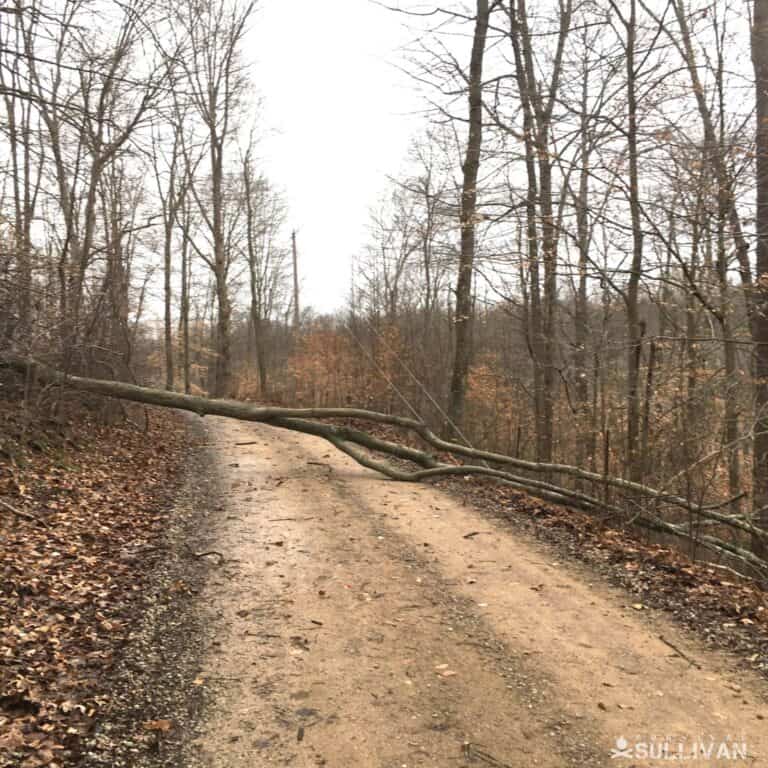
Add in a natural disaster, routes can be unexpectedly blocked by debris such as downed trees and power lines, so expect to continue your journey on foot from thereon.
Finally, you must practice your routes. The best planned route is of no use if you have never traveled it and expect to use it, under stress, when time and effort matters.
Bugout Travel Checklist
- ✅ Paper and electronic maps
- ✅ Multiple routes per location
- ✅ Routes by vehicle and foot
- ✅ Practice each route until it is memorized
BOL Preparations
It’s critical that you put considerable thought and time into preparing your bug out location. Once you have secured your bug out location, prepare that location to sustain you and your family once you get there.
For local BOLs this may come in the form of a simple cache of clothes, cash, and food. A spare suitcase or 5-gallon bucket will do. If you are bugging out to a friend’s house ask to store a small box of clothes and necessities.
Even if you are bugging out farther to friends a similar care package will go far if you show up late at night with only the clothes on your back.
If you have a more formal BOL then there is a good chance you already have it equipped for a moderate stay.
Make sure that you have all the survival needs met: water, food, heat, energy, health and sanitation, communications and community.
There are some people who intentionally choose to survive or “bug out” to the woods rather than at an actual permanent BOL shelter.
It’s no easy feat and if you’re considering this option, make sure you review our article on must have bushcraft tools.
You will also need to invest considerable time, effort, and practice, learning the skills of bushcraft survival.
BOL Preparation Checklist
- ✅ Water
- ✅ Food (3 days, 1 week, 1 month, 3 months, 6 months, 1 year)
- ✅ Security
- ✅ Health and Sanitation
- ✅ Communication
- ✅ Community
The Bug Out Vehicle (BOV)
It is also good practice to have a backup mode of transportation. If you choose a motor vehicle, the first thing to prepare is a bug out bag to store in your vehicle.
Your mode of transportation will primarily depend on the distance to your bug out location, your fitness level and the land features around your home.
You can’t bug out on foot or on a bike in a disaster situation if you become out of breath walking around the block on a typical day. A boat is useless if there is not a river or other waterway that runs through to your BOL.
Be creative with your options. Remember the number one refugee vehicle is a bicycle. Not ridden but as a cart.
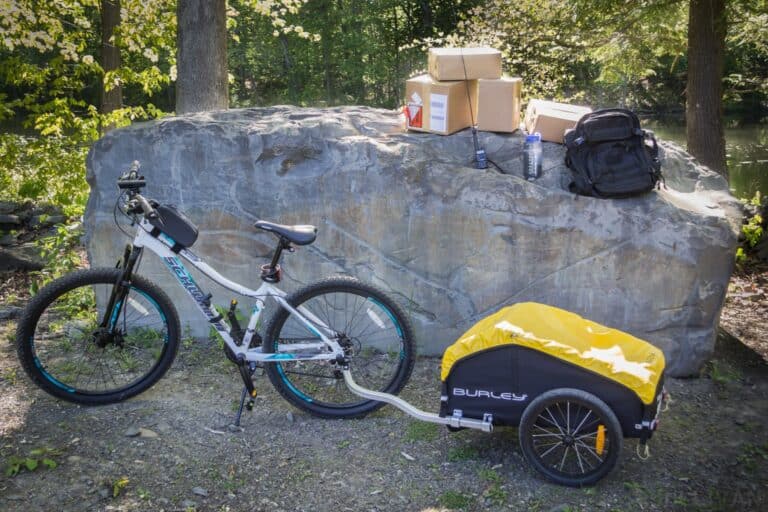
It will be more difficult for you to bug out in a car or truck due to traffic congestion near urban centers so consider alternatives that have more maneuverability.
Remember that in the cities, railroad tracks could be a viable and accessible route out of the city and one that not everyone will think to take. You get the idea.
You will also want to make certain that your mode of transportation is kept in good repair.
If you’re going to travel using a bicycle or canoe, make sure you have materials to patch holes. Motor vehicles should always have a nearly full tank of gas.
Gas pumps may not be working and the ones that are will be a madhouse of desperate people trying to get gas.
If you have a full tank of gas when disaster hits, you will avoid dangerous crowds and will get out of town ahead of everyone else.
BOV Checklist
- ✅ Cart or bicycle to haul equipment easily
- ✅ Bicycle well equipped motorcycle
- ✅ Well-equipped commuter vehicle
- ✅ Specialized BOV
- ✅ Spare gas
- ✅ Spare parts
- ✅ Maintenance schedule
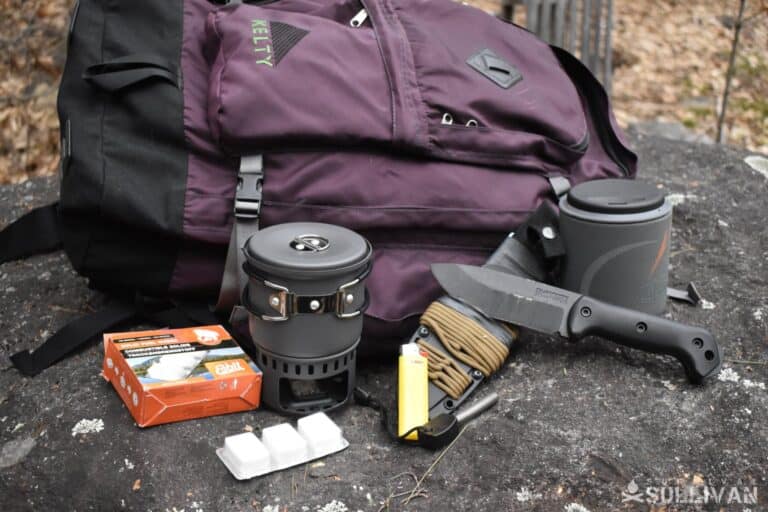
Bug Out Bags (BOB)
If you have to leave your home, you will need supplies. This is where your BOB and its various incarnations come in. The most efficient way to build out your bug out kit is via layers.
Start with what you have on you (EDC). Expand on that to what you need to get home from any local point. The last two layers are the gear that will get you through a short duration emergency and then a longer event.
Remember, these kits move you away from danger. They move you closer to safety without having to stop and collect any additional gear.
Layer 1: EDC Kit
An EDC kit is with you every day, at all times. EDC items are selected to aid you in a time of crisis, big or small, if you have nothing else with you.
First and foremost, you and your spouse and other members of your group should have your own individual EDC kits. The items will vary based on the age and skill level of the individual.
Your EDC supplies should be carried in your pants and shirt pockets, in your purse, wallet work/laptop bag, or around your neck.
EDC items are highly individualized; however, they usually include folding pocket knife, a mini flashlight, a multi-tool, a paracord bracelet or paracord shoelaces and cellphone.
If you must, you can add bigger items, to a laptop bag, a fanny or waist pack. Remember to keep the most critical items on your person.
Include phone numbers for closest friends and parents and at least one trusted person outside the area on a laminated card in their backpack or a pants pocket.
Your EDC is what you will depend on when disaster hits suddenly or when there is no time to prepare.
EDC Checklist
- ✅ Knife or multitool
- ✅ Flashlight
- ✅ Money
- ✅ Medicines
- ✅ Cell phone
- ✅ Security items
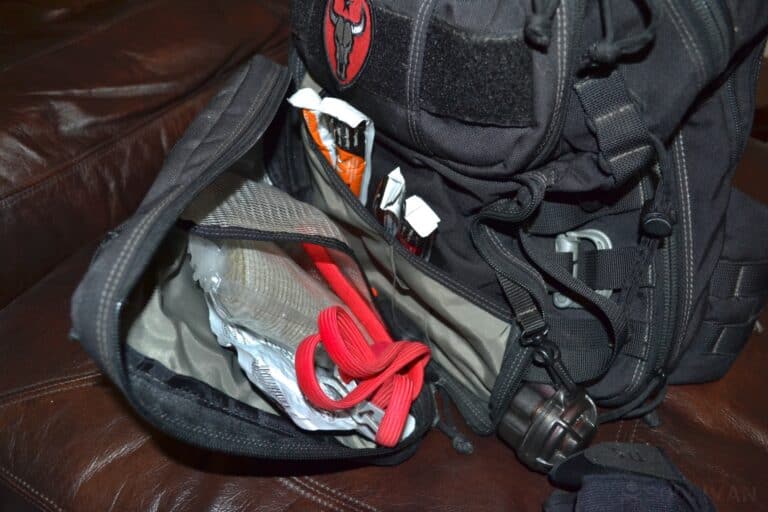
Level 2: Get Home Kit
The next layer is your get home kit. Often bundled into a small bag your Get Home Bag (GHB) is within easy access at almost all times. Keep it discrete so that it will not stand out. It can be a typical backpack or work bag.
Avoid a camouflage pattern or a military tactical bag that draw attention in troubled times. Keep it somewhere that you can access fairly quickly. Store it in your locker at work or hang it on the back of your office door.
Take it with you to Uncle Bob’s for Thanksgiving, on that trip to the zoo with the family, and any place you travel that is farther than walking distance from your home.
In case of a power outage or other crisis while you are at work or away from home, your GHB items will help you get home. Once you are home, you can grab your BOB or INCH bag and rendezvous with family members.
Remember, the goal of your EDC or GHB is to get you where the majority of your stuff is. It minimizes discomfort and maximizes success.
GHB Checklist
- ✅ Covert bag
- ✅ Extra EDC items
- ✅ Paper Maps
- ✅ External cell phone battery
- ✅ Gun and ammo (where allowed)
Level 3: 72 Hour Bag
The next layer will get you through a small event. Most events on the threat matrix will last 3 days (72 hours) or less.
Remember it is more likely that your house burns down or a tree falls through your roof than an EMP ends civilization.
Three days will get you to a hotel or to a neighbor’s house. It will get you into a position of reclaiming your life or some assemblance of order.
Clean clothes, a few meal bars, and basic sanitation items are enough to move you around in relative comfort.
For convenience sake this can be a slightly bigger bag or a layer on top of your GHB. Make it modular, make it simple. Most of the events you’ll encounter will be 72 hours or less.
This should get you off the X for a local disaster, to your BOL for a larger disaster, and handle most things in between.
Spend your time, effort, and money on these three layers of your kit.
72 Hour Bag Checklist
- ✅ Water filter or purification
- ✅ Change of clothes (extra socks and undies)
- ✅ Food for 72 hours
- ✅ Compass \ maps (if any of your routes are on foot)
- ✅ Wilderness survival gear (if any of your routes are via the back woods)
- ✅ Spare ammo (where allowed)
- ✅ Communications gear
Level 4: I’m Never Coming Home Bags (INCH BAG)
The final layer gets serious. Bags in this layer have names like I’m Never Coming Home (INCH) Bag, Get Out of Dodge (GOOD) Bag, and my favorite – The Fugitive Kit. This is the bag you hope you never have to use. It gets deployed when you need to run, and run now.
Again, think in layers. What do you not have in your other layers that will extend your abilities beyond 3 days? Think more comprehensive.
It is the bag you will take if you believe that your BOL could be compromised or unreachable. It is intended to carry items to help you survive for longer than 72-hours.
This is the bag you carry if you believe that you and your family might have to survive in the woods for an extended period of time.
Planning to spend an extended amount of time surviving in the woods or living off the land? You will need a quality bushcraft knife.
This type of knife is heavy duty and is designed to withstand the repeated use that is required when you’re living in the woods. If you need more information, see our article on how to choose the best bushcraft knife.
Include references in your INCH bag on how to identify edible and medicinal plants in your local area. Include some basic seed packets, and staple foods like beef or chicken bouillon.
It should include items designed to help you hunt or otherwise catch food and basically survive in the woods for an extended period.
INCH Bag Checklist
- ✅ Water filter or purification
- ✅ Food and a means to gather or catch additional food
- ✅ Shelter components (tent, tarp, bivy)
- ✅ Multiple changes of clothes for various weather conditions
- ✅ Extra security (spare ammo, multiple guns, knives, etc.)
- ✅ Extended communications gear (improved antenna, extra batteries, etc.)
Dangers and Challenges with Bugging Out
There are a thousand things that can go wrong, or just not as planned, when you are bugging out during an emergency or crisis situation. Keep Murphy’s Law in mind and prepare for the worst-case scenario but hope for the best.
Always have backups! Understand and make an alternate plan for when your routes to your BOL are impassable or when you arrive at your BOL, all of your stockpile has been stolen.
Have a backup plan in place if your BOV or BOB is stolen or has to be left behind. Know what to do if family members sustain injury or become separated.
Regardless of whether you have to spend one night or an extended period of time in the woods with your family, bad weather, especially rain and snow, can certainly throw a wrench in the best laid plans.
Read more about how to use the bow drill method of fire starting and tons of other ways to start and maintain a fire so you can stay warm and dry.
Cooking outdoors or in the woods over a fire can certainly be challenging, especially if it’s not something that you’ve practiced. Make sure your bug out kit includes the equipment and cookware to make outdoor cooking easier.
Can you cook without creating lots of smoke, to avoid alerting people to your location and to the fact that you have food at your campsite?
Trust me, it’s not something you want to advertise if SHTF. Most people have had the occasion to cook on a charcoal or propane grill.
In a bug out situation, however, you may be forced to consider different methods of outdoor cooking to stay safe and avoid negative confrontations.
Another thing that can go wrong which will definitely put your life and that of your family in danger is if you run out of fresh drinking water before you get to your BOL or once you’ve arrived and been staying there for several weeks.
Make sure that you have planned for and practiced several different ways to secure water. The water you can access may not always be fresh so it’s crucial to know several ways to purify water if the need arises.
One of the scariest things that can go wrong when you and your family are bugging out and trying to get to your BOL safely is that you could be accosted by thieves or other desperate people who want what you have.
They could threaten to take your BOV, your equipment, your food, or even your spouse or children. You absolutely must have a plan to deal with this type of confrontation.
Have a security plan that your family is aware of and has trained. Everyone should know their duties during a confrontation.
Evacuation Emergency Preparations
- ✅ Backup routes, locations, and plans
- ✅ All weather plans
- ✅ Practiced skills for living on the “road” and off the beaten path
- ✅ Multiple water procuring and filtering methods
- ✅ Practiced security plan
Special Considerations
As stated above, there is no “One Size Fits All” plan for bugging out. Everyone will have one or more special considerations. I’ll cover a few.
If I don’t address yours, hopefully you can lift some useful information and apply it to your situation.
Bugging Out with the Elderly and Children
We all have special considerations with regards to who we will be bugging out with. The most common will be bugging out with the elderly or with children.
When bugging out with the elderly there are two main concerns. The first is getting their buy in on the move. In many cases the elderly have been independent their entire lives and that has recently changed.
To various degrees they may have seen their responsibilities diminish and being told that it is time to leave may not be met with full acceptance.
Likewise, they may not want to leave as “I’ve lived here my entire life” or “I’ve lived through more than this.” Both attitudes may make it a challenge to convince them to leave.
Secondly, there are physical restrictions that impact moving. Not all elderly people are either mobile or physically independent. They may require special equipment and most will slow the pace of movement in any group.
If your evacuation plans include any elderly people you must be prepared for an early bug out. Potentially you may have to prepare for a lot of convincing.
Bugging Out with the Elderly
- ✅ Early evacuation trigger
- ✅ Rock solid “it’s time to move” evidence
- ✅ A realistic evaluation of pace of movement
- ✅ Sufficient care materials and facilities at your BOL
Bugging out with children is similar however you will generally have a little more authority over the decision and will require minimal negotiation.
The primary concerns with children are keeping them calm and moving at speed.
Keeping children calm during a move is all about providing them just the right sense of urgency. This may come in the form of presenting the move as a game for younger kids. For older kids it may involve giving them responsibilities during the move.
Regarding the physical act of moving they will most likely tire sooner and may require significant attention if the situation requires quiet movement or movement that goes unnoticed.
Be prepared to slow your pace and add elements of entertainment or distraction to ease their fears.
Bugging Out with Children
- ✅ Early evacuation trigger
- ✅ A realistic evaluation of pace of movement
- ✅ Personalized BOBs for each child
- ✅ Entertainment
Pets
Love them. Need them. Treat them like they are your children. Pets are an integral part of our lives. You must consider this when planning your bug out.
An easy example is dogs. Most can keep pace with their owners. If not work with them until they are in sufficient shape to handle an evacuation.
Dogs can even wear their own BOBs. Dog backpacks are affordable and can hold sufficient supplies for up to 72 hours.
Non-leashed pets will present other challenges. Add their specific needs to your plan. Do you have a means to transport them (e.g. crate or carrier)?
Is it small enough to fit in your gear but large enough to be comfortable for them? Can they be moved with proper sound discipline?
These are all difficult decisions that must be made when bugging out with pets. Even more difficult is the choice you may need to make if it becomes impossible to bug out with them. Consider this before you get that new puppy, or adopting another cat.
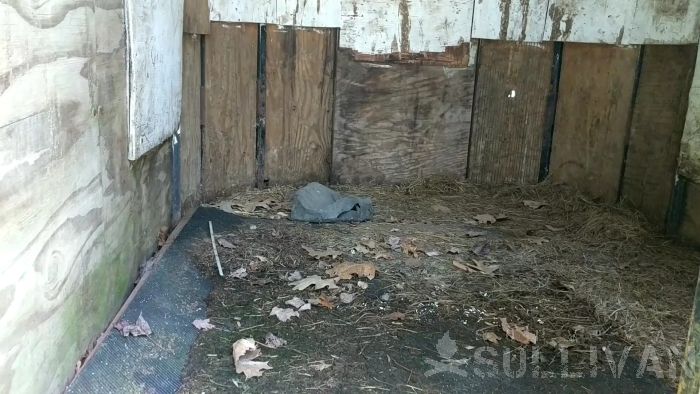
Livestock
There is little easy about moving livestock. Even small and portable animals like chickens or quale can be easily stressed during a move.
That is unfair and should be unnecessary for all but the most last minute and urgent bug outs.
Larger animals require even more planning and preparation. Horses can become an integral part of your bugout plan.
Cows, not so much. How will you transport them? Do you have enough trailers to move the in one trip, or will you make multiple trips?
How about food? Livestock eat and drink a tremendous amount. Are there watering stations along your route or will you also transport hundreds of gallons of water?
Regardless of the animal, timing will be everything. Triggering too late and a pet will be a liability and may cost you your life. Trigger early, with sufficient time to bug out with All your animals.
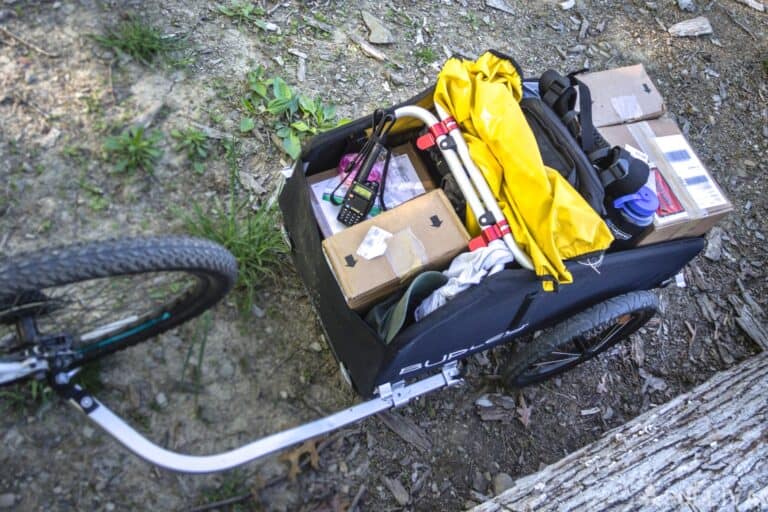
Bugging Out with Pets and Livestock
- ✅ Early evacuation triggers
- ✅ A realistic evaluation of pace of movement
- ✅ Sufficient food and water for both the journey and the BOL
Urban Bug Out Situations
If you need to survive in an urban area such as a large city during a SHTF event or disaster, you have additional factors to consider.
Your bug out location may be closer or you may have to keep moving between several pre-determined locations.
There will be more broken glass and debris from nearby buildings so you may need sturdier shoes, gloves, a long-sleeved shirt, and thicker pants even in warm weather. This clothing will protect you from sharp metal edges and broken glass.
There will definitely be larger numbers of people around you. This is something you have to plan for because desperate people do desperate things.
To keep yourself and family safe in an urban environment, it’s critical that your plans place more emphasize on self-defense, evasion, hiding, and grey man tactics.
More opportunities for bartering will be likely as you encounter more people but you will have to deflect attempts to persuade or force you to share what you have as well.
The good news is that foraging in an urban setting can be easier due to the proximity of abandoned buildings like stores and apartments.
There will also be multiple abandoned buildings to take shelter in as you move around and lots of debris, plastic, cardboard, wood, metal, and even glass that can be used for making a shelter. There will also be abandoned vehicles to use as temporary shelter.
So if you live in the city, don’t get discouraged and go ahead and practice your bugout plan!
Testing Your Bug Out Plans
Excellent! You have your library of bug out plans, each with various routes to safety. For each route you have a preferred and a backup vehicle. Each has been properly maintained and is in excellent working order.
You keep multiple layers of equipment in covert day packs or student bags. You’ve even color coded the components such that you can repack with no thought.
But have you practiced?
During stress execution is limited to the level of mastery that you have achieved. A plan on paper is worth exactly nothing if it hasn’t been practiced.
Make a concerted effort to practice the skills you will require on your bugout. If you are on food then how far can you ruck in a day? Do you meet your planned amount? Have you tried it during the latest rain storm? Where does you gear fail when it’s wet?
Do you have all your routes memorized? How about a sample trip with your spouse rolling the dice and saying “Road ahead is closed, re-route now!” Oh, yeah GPS not allowed.
The short of it is, you won’t know if your plan works until you’ve tried it. Tried it under optimal conditions and poor conditions. Tried it with mental and physical preparation and tried it as an absolute surprise.
Work your plan to failure. Then fill in the gaps and sure up the weaknesses. Remember practice what you suck at!
Conclusions
There is just no way that I could list every possible scenario that could come up and there is no way to plan ahead for every single thing.
Research those things most likely to impact your local area first and foremost and customize your plans for those events. Then learn and practice as many skills as you can.
The more skills you have, the less you actually have to carry with you and the more prepared you will be to handle whatever nature or society may throw your way.


Born and raised in NE Ohio, with early memories that include grandpa teaching her to bait a hook and watching her mom, aunts, and grandmothers garden, sew, and can food, Megan is a true farm girl at heart.
For Megan, the 2003 blackout, the events of 911, and the increasing frequency of natural disasters like Hurricane Katrina, spurred a desire to be more prepared. Soon to be living off-grid, this mother of four and grandmother of ten is learning everything she can about preparedness, survival, and homesteading.

Very good artical. Very thought out. Gives a lot to think about.